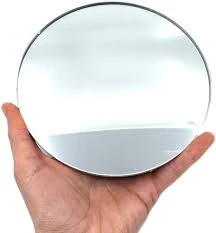

The Silver Mirror Manufacturing Industry A Comprehensive Overview
The production of silver mirrors is a significant sector in the manufacturing industry, intertwining the art of craftsmanship with advanced technology. Silver mirrors, known for their brilliance and reflective qualities, are essential in various applications including household items, commercial establishments, and even in specialized fields like photography and astronomy. With a growing demand across different sectors, the silver mirror manufacturing industry has seen substantial evolution over the years.
Understanding Silver Mirrors
Silver mirrors are made through a process known as silvering, where a layer of silver is applied to a substrate, usually glass. This layer becomes highly reflective, providing a perfect surface for viewing. The quality of a silver mirror is determined by its reflectivity, durability, and resistance to tarnishing, making the choice of materials and manufacturing processes crucial.
Historically, silver was favored for its exceptional reflective properties. However, the introduction of aluminum mirrors has provided an alternative, primarily due to cost benefits and resistance to tarnishing. Nevertheless, silver mirrors continue to hold a prestigious position in the market, especially for high-end decorative pieces and functional applications where superior optics are required.
Manufacturing Process
The manufacturing of silver mirrors involves several key steps
1. Glass Preparation The process begins with selecting high-quality glass, which can influence the mirror's overall clarity and finish. The glass is then cleaned rigorously to remove impurities that might affect the silvering process.
2. Silvering This step involves the application of a silver nitrate solution to the back of the glass. This is where the mirror gets its name. The silver ions in the solution are reduced to metallic silver, forming a shiny reflective layer. Modern techniques often involve vacuum deposition or chemical reduction methods, which are more efficient and create a finer quality for the finished product.
3. Backing and Coating Once the silver layer is applied, a protective backing is added to prevent corrosion and damage. Typically, paint or a polymer film is used to encase the silver, enhancing its durability.

4. Quality Control Following the production, each mirror undergoes rigorous quality checks to ensure that it meets industry standards. This includes testing for reflectivity, uniformity, and resistance to environmental factors.
5. Finishing Touches The final step involves cutting, polishing, and finishing the mirrors to suit specific applications, whether they are intended for wall mounts, handheld usage, or other decorative purposes.
Market Trends and Demand
The demand for silver mirrors has seen fluctuations based on various factors such as interior design trends, technological advancements, and economic conditions. Interior design trends, particularly the growing popularity of minimalist aesthetics, have led to an increased consumer interest in high-quality, stylish mirrors. Furthermore, the expanding commercial sector, with its need for visually pleasing and functional products, continues to bolster the silver mirror market.
Challenges in the Industry
Despite its benefits, the silver mirror manufacturing industry faces several challenges. Environmental regulations regarding silver and chemical usage have pressured manufacturers to adopt greener practices. Additionally, the rising cost of raw materials can affect profit margins, prompting a shift towards alternative materials or production methods.
Moreover, manufacturers must also contend with competition from lower-cost alternatives, such as aluminum mirrors. As consumers become more price-sensitive, striking a balance between quality and cost becomes paramount for companies wishing to maintain their market share.
Conclusion
In conclusion, the silver mirror manufacturing industry remains a vital part of the broader manufacturing landscape, characterized by its blend of tradition and modernity. As technology evolves and consumer preferences shift, manufacturers are finding innovative ways to enhance production efficiency while meeting the growing demand for high-quality, reflective surfaces. With a well-defined niche market, silver mirrors are likely to continue making an impact in various sectors, ensuring that this manufacturing segment retains its significance for years to come. The interplay of quality, technology, and design will be key to navigating the future of silver mirror production, securing its place in both functional and ornamental applications.